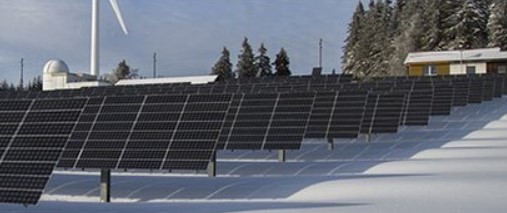How Nordic PV Markets are Leading the European PPA Trend
The Scandinavian region is leading the well-established European trend of signing corporate PPA deals. Serving as a recent example, Nordic Solar has signed a corporate PPA with EWII and Skjern Paper, with the Danish Law firm Plesner and the advisory firm Our New Energy acting as advisors to the deal.Together with Mikkel Kring, Partner at Our New Energy, we dive into the peculiarities of this deal and why, in his view, the Nordic markets will set a trend for the European PPA market.As Mikkel will be joined by the other major stakeholders involved in the deal at the Solarplaza Summit Nordics on September 29 in Copenhagen, you can expect an even deeper analysis of the details of the deal during the event.
Q: You have just advised Nordic Solar in executing an innovative corporate PPA in Demark, which involved Nordic Solar, EWII Energy and Skjern Paper. What makes this deal stand out from your perspective?
A: Denmark has a large number of mid-sized corporates who wish to contribute positively to decarbonizing our society. However, they struggle with the complexity and process of executing PPAs that facilitates additional renewables capacity build-out. With this deal, we have established a framework that efficiently allocates the risks under a scalable structure. The structure resembles PPAs that we have recently executed in the UK and Sweden, where a credit-worthy energy company sits between the solar asset and the corporate and assists in the efficient allocation of risks. Another thing that makes it stand out is its pragmatism. When negotiating a PPA, it is important that all parties focus on the “ball” and are working to get the deal done. All parties in this transaction have approached the negotiations with pragmatism, which has only been possible due to the experience of the parties.
Q: Nordic, and particularly Danish, power prices have followed the bullish sentiment we see across Europe. How has this impacted PPA prices?
A: PPAs, today, represent an attractive opportunity from both a risk and pricing perspective. Volatility and associated budget uncertainty associated with power expenditures has never been higher, and this is driving increased interest from corporate off-takers to engage in PPA discussions, as they are an efficient tool to mitigate against such risks. As PPAs, in most Nordic markets, are still priced below the futures and forecasted curves, they further remain attractive from a pricing perspective. That being said, however, we continue to see a significant rise in PPA prices and expect this bull run to increase. In most Nordic markets, demand outweighs supply, and that is pushing PPA prices up.
Q: What is your best advice for newcomers to the Nordic solar market?
A: Corporates who wish to enter into PPAs should ensure that they establish a strong understanding of the key PPA mechanisms and risk allocations early in the process. We have seen too many C-PPA processes derail due to a lack of internal approvals, indecisiveness, and tardy realization of risk allocation. Developers who are looking to execute PPAs should engage with the potential off-takers early on and be clear on their desired risk allocation. At Our New Energy, we put great emphasis on the “structuring” phase, which takes place before engaging with the off-takers. It is a quantitative exercise that establishes the desired boundaries for the PPA and ensures an efficient market engagement process. This is particularly crucial in a volatile market, as lack of preparation will imply longer negotiation processes, exposing the process to changing power prices and fundamentals, in turn significantly increasing what we denote as “transaction risk”.
Q: What is the outlook for the Nordic PPA market?
A: Personally, I am very bullish on the Danish and Swedish (SE3/SE4) solar markets. We are seeing significant development activities, and corporate procurement interest has never been higher. We have executed 3 corporate-backed PPAs (DK1; SE3 and SE4) over the past 2 months, and have several more in the making. The PPA sizes are still smaller than those in southern Europe. However, development projects are increasing in size, and most corporate procurement interests we are currently seeing can facilitate +40MW projects. We expect to see executed PPAs in Sweden between 1-1,5 GW in 2023 and 2-2,5GW in 2024. Denmark will be able to absorb twice that volume. However, this is subject to the various P2X projects currently in planning. I am more uncertain about the Finnish PV market, as wind is an attractive alternative, and we don’t yet see the emergence of a trend of mid-sized corporates ready to absorb profile risk. The biggest challenge for the further development of the Nordic PPA market is the efficient allocation of profile risk. Something that we are working intensively on to facilitate the further decarbonization of the Nordic electricity grid.
